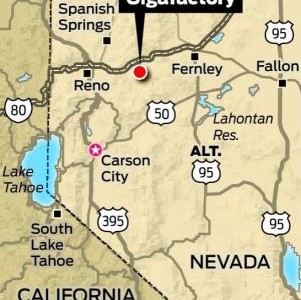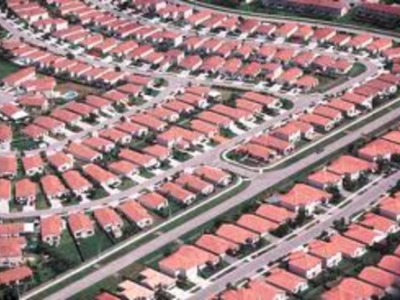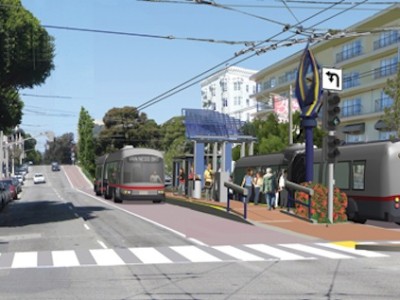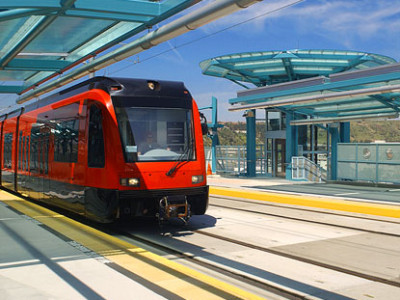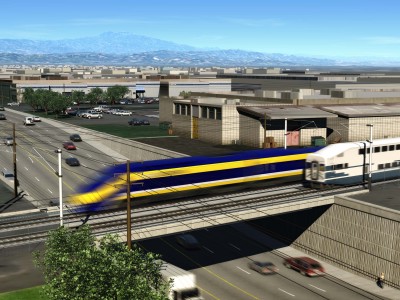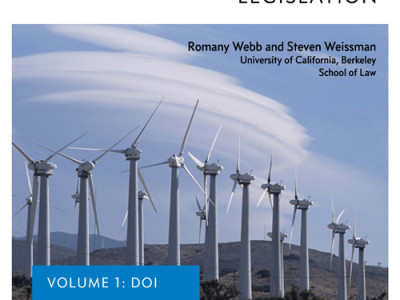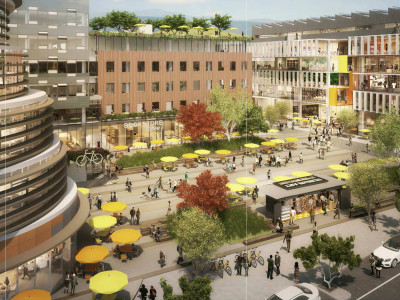Land Use
Kashkari’s Unworkable Environmental Review “Reform” Plan
Net zero buildings for everyone?
In last night’s California gubernatorial debate, Republican candidate Neel Kashkari proposed a major reform to the California Environmental Quality Act (CEQA), which requires environmental review of new projects. But rather than gutting CEQA completely, a la State-Senator-turned-Chevron-lobbyist Michael Rubio, Kashkari proposed to give all projects the same breaks that the Sacramento Kings received in last …
Continue reading “Kashkari’s Unworkable Environmental Review “Reform” Plan”
CONTINUE READINGWhy Tesla’s Nevada Gigafactory Could Be Bad For The Environment, Compared To A California Site
Electric vehicle pioneer to announce its siting decision today
Some California environmentalists may be celebrating now that Tesla has apparently decided to build its $5 billion “gigafactory” in Nevada instead of California. Lawmakers here had toyed with the idea of weakening the state’s signature environmental law, the California Environmental Quality Act (CEQA), to help expedite review on the factory and therefore encourage Tesla to …
CONTINUE READINGMisleading Attacks On California’s New Transportation Analysis Under CEQA
Big Law Firm Holland & Knight Misrepresents New State Guidelines
Last year, the California legislature passed badly needed reform to change how agencies evaluate a project’s transportation impacts under the California Environmental Quality Act (CEQA). The Governor’s Office of Planning and Research (OPR) was tasked with coming up with new guidelines for how this analysis should be done going forward. As I blogged about, the …
Continue reading “Misleading Attacks On California’s New Transportation Analysis Under CEQA”
CONTINUE READINGTransit-Oriented Projects In California Won’t Be Penalized For Traffic Impacts Anymore
Governor’s Office Releases New Environmental Review Guidelines
Back in 2013, there was significant discussion about reforming the California Environmental Quality Act (CEQA), with the business community and its attorneys arguing that CEQA is nothing more than a litigation tool for opponents of new projects. Some environmentalists and labor unions countered that CEQA is necessary for decision-makers to adequately assess the environmental impacts …
CONTINUE READINGBack in the Fast Lane
New Pritzker Brief from UCLA Law on Making Public Transit Work
Fellow blogger Ethan Elkind has spent a lot of time researching the history, politics, and future of transit in California. Earlier this year he published Railtown, a fascinating portrait of the fight over development of the L.A. Metro rail system, revealing the degree to which that development has been driven by good old-fashioned politics and even intrigue …
Continue reading “Back in the Fast Lane”
CONTINUE READINGBig Court Wins For High Speed Rail
More litigation to come, along with funding challenges, but construction can finally begin
The California High Speed Rail Authority secured a big legal victory in the state court of appeals yesterday, which overturned twin decisions by a trial court judge that threatened to derail (no pun intended) the entire program. Coupled with another appellate court win a week ago upholding the program-level environmental review on the Pacheco Pass …
Continue reading “Big Court Wins For High Speed Rail”
CONTINUE READINGAddressing Climate Change Without Legislation
A new report from UC Berkeley looks at the underused powers of the US Department of the Interior.
Now that the Environmental Protection Agency has announced its proposed rules for restricting greenhouse gas emissions from existing power plants, the climate focus of EPA and the states will first be on polishing the rules for final approval, then on the anticipated law suits, and then on the development of state plans to meet the …
Continue reading “Addressing Climate Change Without Legislation”
CONTINUE READINGFeds Downgrade Monterey Shale Oil Reserves by 95.6%
LA Times op-ed highlights increase in trains transporting oil into California
The U.S. Energy Information Administration (EIA) is reducing its previous estimate for technically recoverable oil in California’s Monterey Shale from 13.7 billion barrels of oil to just 600 million barrels of oil—a dramatic 95.6 percent reduction. Has the oil industry been chasing rainbows in search of illusive “black gold” Monterey oil? For years, the oil …
Continue reading “Feds Downgrade Monterey Shale Oil Reserves by 95.6%”
CONTINUE READINGOf Corn and Climate
Trouble may be brewing in the corn belt.
We continue to gain a better understanding of the impacts of climate change, which are sometimes subtle and unexpected. Two articles in Science report significant new research. The first report comes from two researchers at the University of Illinois. Corn, like other plants, needs to pull CO2 from the air for photosynthesis. But the same tiny …
Continue reading “Of Corn and Climate”
CONTINUE READINGCalifornia’s Infill Backlash
It’s here, and it needs to be addressed
For environmental and economic reasons, we want jobs and people to move back to our cities. People living in cities pollute less because they don’t drive as much and tend to live in smaller homes. Economically, they can save a lot of money on transportation and energy costs, while thriving neighborhoods can create cultural and …
Continue reading “California’s Infill Backlash”
CONTINUE READING




